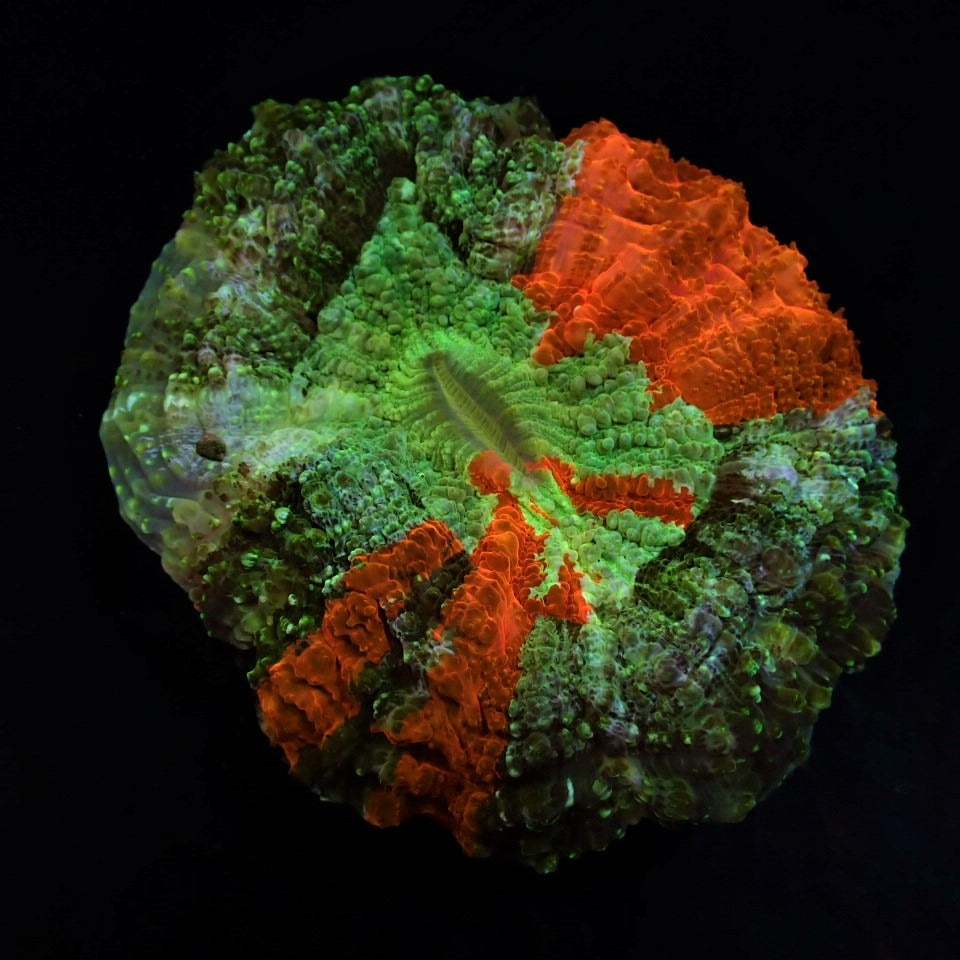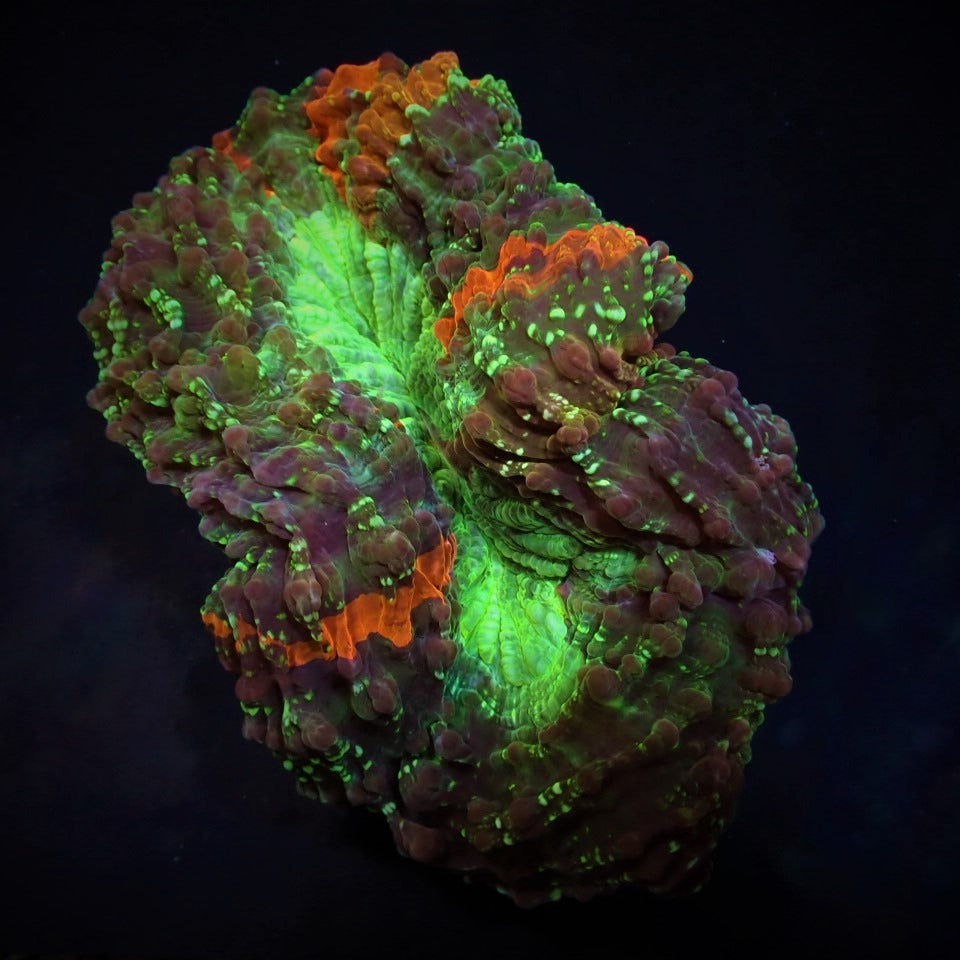Coralreef Store
Acanthophyllia deshayesiana (Bleeding Apple)
Acanthophyllia deshayesiana (Bleeding Apple)
Couldn't load pickup availability
- Indo-Pacific
- Moderate to High Care Level
- For Experienced Hobbyists
- Moderate Placement in Reef Tank
Acanthophyllia deshayesiana, also known as the Bleeding Apple Coral, is an impressive coral native to the Indo-Pacific region. This solitary hard coral species features large, fleshy polyps known for their striking colors, such as deep red, orange, and green, with contrasting white and yellowish hues that create a "bleeding" effect around the edges of the polyps. The coral has a globular structure with a thick, fleshy surface, making it a visually striking addition to any reef tank. Due to its slow growth and sensitive nature, Acanthophyllia deshayesiana is best suited for experienced hobbyists who can maintain the ideal conditions.
Placement in the Tank
Acanthophyllia deshayesiana prefers moderate to low light, with a light intensity of 100-200 PAR. It is best to place the coral in the middle or lower sections of the tank, where it will not be exposed to intense lighting, as too much light can lead to stress and bleaching. This species thrives in moderate to weak flow, with excessive flow potentially causing the polyps to retract or even get damaged, while insufficient flow can hinder feeding.
Water Parameters
For optimal health and growth, it is important to maintain stable water parameters:
- Temperature: 24°C to 28°C (75°F to 82°F). A stable temperature of 26°C (79°F) is ideal.
- Salinity: 1.023–1.025 specific gravity (SG), with 1.024 being optimal.
- pH: 8.0 to 8.4, with an ideal pH of 8.2.
- Alkalinity (dKH): 8-12 dKH, with 9-10 dKH being the ideal range for healthy growth.
- Calcium: 400-450 ppm for strong skeletal formation.
- Magnesium: 1250-1350 ppm.
- Nitrate: Less than 5 ppm, as elevated nitrate levels can harm coral health.
- Phosphate: Below 0.03 ppm to prevent unwanted algae growth.
Feeding
Acanthophyllia deshayesiana has a symbiotic relationship with zooxanthellae algae for photosynthesis, but it is also a filter feeder that requires additional feeding. In aquariums with limited plankton, you can offer finely chopped meaty foods such as mysis shrimp, brine shrimp, or liquid coral foods. Feeding once or twice a week is usually sufficient. Avoid overfeeding to maintain water quality and prevent excess waste from accumulating in the aquarium.
Maintenance and Care
Maintaining a healthy Acanthophyllia deshayesiana requires regular monitoring of water quality and periodic maintenance:
- Water Changes: Perform 10-15% weekly water changes to keep water conditions stable and remove harmful substances.
- Monitoring Water Parameters: Regularly check key parameters such as temperature, pH, calcium, and alkalinity to ensure ideal conditions are maintained.
- Pruning: Acanthophyllia deshayesiana does not require frequent pruning, but it is important to provide enough space for growth. Avoid overcrowding in the tank to minimize competition for resources.
- Pest Control: Be on the lookout for pests like flatworms, Aiptasia, and nudibranchs that can harm the coral. Take immediate action to remove pests if necessary.
Compatibility
Acanthophyllia deshayesiana is a peaceful species but can be territorial. It is best to keep this coral away from aggressive species such as SPS corals, which have long stinging tentacles that can cause damage. Acanthophyllia deshayesiana thrives in the company of other soft corals and non-aggressive LPS species, provided there is enough space for growth.
Conclusion
Acanthophyllia deshayesiana (Bleeding Apple Coral) is a visually stunning coral that can serve as a standout centerpiece in a reef tank. With the right care, stable water conditions, and regular attention, this coral will thrive and provide the aquarium with beautiful colors. Due to its moderate to high care requirements, this coral is best suited for experienced hobbyists who can provide the necessary stability and care.
Share




